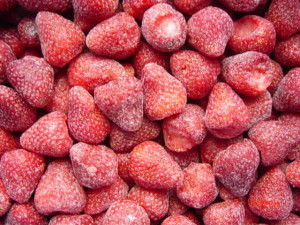Epidemiological investigations of outbreaks of hepatitis A virus (HAV) and norovirus (NoV) infections in the European Union/European Economic Area (EU/EEA) in the last five years have highlighted frozen berries as a vehicle of infection.
 Given the increasing berry consumption in the EU over the last decades, we undertook a review of the existing evidence to assess the potential scale of threat associated with this product. We searched the literature and four restricted-access online platforms for outbreak/contamination events associated with consumption of frozen berries. We performed an evaluation of the sources to identify areas for improvement. The review revealed 32 independent events (i.e. outbreak, food contamination) in the period 1983–2013, of which 26 were reported after 2004. The identified pathogens were NoV, HAV and Shigella sonnei. NoV was the most common and implicated in 27 events with over 15,000 cases reported. A capture–recapture analysis was performed including three overlapping sources for the period 2005–2013.
Given the increasing berry consumption in the EU over the last decades, we undertook a review of the existing evidence to assess the potential scale of threat associated with this product. We searched the literature and four restricted-access online platforms for outbreak/contamination events associated with consumption of frozen berries. We performed an evaluation of the sources to identify areas for improvement. The review revealed 32 independent events (i.e. outbreak, food contamination) in the period 1983–2013, of which 26 were reported after 2004. The identified pathogens were NoV, HAV and Shigella sonnei. NoV was the most common and implicated in 27 events with over 15,000 cases reported. A capture–recapture analysis was performed including three overlapping sources for the period 2005–2013.
The study estimated that the event-ascertainment was 62%. Consumption of frozen berries is associated with increasing reports of NoV and HAV outbreaks and contamination events, particularly after 2003. A review of the risks associated with this product is required to inform future prevention strategies.
Better integration of the available communication platforms and databases should be sought at EU/EEA level to improve monitoring, prevention and control of food-borne-related events.
Food-borne diseases associated with frozen berries consumption: A historical perspective, European Union, 1983 to 2013
Eurosurveillance, Volume 20, Issue 29, 23 July 2015
Tavoschi L, Severi E, Niskanen T, Boelaert F, Rizzi V, Liebana E, Gomes Dias J, Nichols G, Takkinen J, Coulombier D.
http://www.eurosurveillance.org/ViewArticle.aspx?ArticleId=21193
